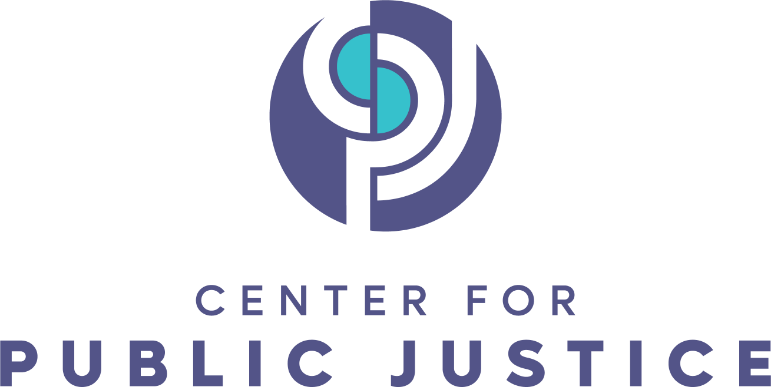
Imagine one day you are just sitting at home with your parents when suddenly there is a knock at the door. Your mom opens the door and this person says to you, “Hey come on, we’re going to go somewhere.” So, you agree and hop in the car. Then you arrive at someone else’s house and this person takes a suitcase out of the trunk of the car and says, “Okay, this is where you’re going to live now and these are your new parents.” You are not allowed to contact your parents or any of your old friends because they are considered a harm to your health, and you have to attend a new school and live with this new family while having no contact with any of the people you were close with. This is how Royce described the foster care system. He was placed in it at the age of 2 but was reunited with his mother until the age of 14 and then placed back in foster care again because of his mother’s drug, alcohol and physical abuse.
Transplanting a child — like Royce — from one family to another, although sometimes necessary, is almost always an emotionally traumatic experience. In 2021, the average foster child spent nearly two years in foster care and over a third of foster youth experience at least three placements a year. Constant movement can create turmoil and raise questions for a child about their self-worth; a lack of stability means that a child may not have the due attention needed for adequate care. This sets the stage for a messy battle with mental illness which itself can have compounding effects for youth.
Traditionally, addressing the mental health challenges of foster care youth has been primarily reliant upon the use of medications with little emphasis given to therapy and other behavioral health services. The overdependence on medicating our foster youth constitutes an injustice because it serves to numb them to their pain without offering any positive steps to cope with it through therapies or other behavioral health services that would enable them to flourish. Medication without therapy is like putting a Band-Aid on a wound that needs surgery – it doesn’t really fix the problem.
Medication without therapy is like putting a Band-Aid on a wound that needs surgery – it doesn’t really fix the problem.
Background
According to The Annie E. Casey Foundation, foster care is designed to be a temporary living situation for children whose parents cannot take care of them. During a child’s time in foster care, the goal of the court and the professionals on a child’s case is to ensure their safety, provide for their needs, and determine the best plan for stability. Unfortunately, it seems that the best intentions of the courts to provide for the needs of these children are unlikely to compare to the care that comes from the family. Courts, for example, have to care for multiple children who fall under their supervision and make decisions about their well-being from an epistemic distance that does not exist in the natural family.
According to the American Academy of Pediatrics, mental and behavioral health is the largest unmet health need for children and teens in foster care. Youth who enter into the foster care system are by definition experiencing significant family disruptions earmarked by the emotional trauma that led to their entry into it in the first place. Recent studies suggest that up to 80 percent of the roughly 400,000 children that are in foster care at any given time have significant mental health issues yet of the children in foster care, just 23 percent of those in care for at least 12 months received any mental health services like therapy or counseling. Instead, the focus seems to have been primarily on treatment by psychotropic medication alone.
Psychotropic medications are designed to affect the central nervous system to treat psychiatric disorders and include antidepressants, mood stabilizers, antipsychotics and psychostimulants. Federal law says that “oversight” shall be provided in prescribing such medication but what exactly is meant by “oversight” is unclear. In California, for example, only a juvenile court judicial officer can authorize such medications. The court makes its decision based on the physician’s request, the basis for that request, the child’s diagnosis and behavior and the effects of the medication. Several forms must be provided to the parents, caregiver, court appointed special advocate, tribe (if applicable), and all parties’ attorneys. Remarkably, the prescribing physician is not required to see the youth ever again. The only checks that exist on such prescriptions are the judicial officer and an opposition form.
A joint effort between the Center for Health Care Strategies and The Annie E. Casey Foundation resulted in the Psychotropic Medication Quality Improvement Project, henceforth PMQIP, which looked at the use of psychotropic medication in foster children. The results of the three year study showed that the number of children who were covered by Medicaid increased by 12 percent to 32.4 million between 2005 and 2011. During this period, Medicaid-covered children receiving psychotropic medication increased by 28 percent. This suggests that the increase was not driven solely by the increase in the total number of children in the program.
In 2011, over 2.1 million Medicaid-covered children were prescribed psychotropic medication. The youngest age group of 0 to 5-year-olds constituted 8 percent of those on psychotropic medication. This represents an increase of 130 percent from 78,000 to 179,000 children over the six year period from 2005 to 2011. Likewise, the 6 to 12-year-old age group constituted 52 percent and 1.1 million children, and the 13 to 18-year-old age group made up 39 percent and 850,000 children over that same period. The increasing prescription of psychotropic medication among young children requires some explanation.
One of the primary reasons foster youth receive so many overlapping prescriptions is due to their initial use during a psychiatric episode that continues at high dosage because of inadequate psychiatric follow-up. A single authorized caregiver handling a child’s case mitigates this risk by establishing responsibility for organizing physician follow-ups.
Youth are also sometimes wrongfully medicated because traumatic stress symptoms are often indistinguishable from other mental health conditions which can lead to misdiagnoses and inappropriate treatments. Without behavioral health services, normal rebellious phases and childhood development cannot be discerned from real mental illnesses. The PMQIP also indicated that among Medicaid-covered children, 47 percent receiving psychotropic medication in 2011 did not receive any behavioral health services in conjunction with prescribed medication. Roughly one-third of the children from the study who received no behavioral health services were on multiple medications but this number jumps to 47 percent for children in foster care. This suggests that foster youth are being misdiagnosed because of a lack of behavioral health services.
The efforts of the joint research project resulted in a number of recommendations for states to address these issues. These included improving and standardizing the consent process for medicating youth; improving data-sharing for oversight by state governments; increasing and supplementing knowledge among providers, case-workers, family and youth with clinical experts; reducing the use of inappropriate antipsychotics; reducing the inappropriate use of medications among children under the age of six and increasing provider adherence to evidence-based practices as outlined in resources like the Medicaid Medical Directors Learning Network and the Rutgers CERTs (Center for Education and Research on Mental Health Therapeutics).
A Public Justice Framework: Government
The norm of public justice requires the government to step in when families cannot fulfill their responsibility to care for and nurture children. In the case of foster youth, the government has failed in its obligation to protect foster youth from an overdependence on psychotropic medications. Now it must fulfill its role by addressing the fact that these medications are being frivolously fed to foster youth to cope with their trauma and suffering. The recommendations from the PMQIP are an excellent starting point for state governments. State governments should provide explicit instructions regarding consent processes so that it is clear who has authority to sign for treatments and evaluations.
Justice also requires additional training for the social workers, attorneys and judges acting on behalf of the government, who need additional information in order to make decisions that are in the best interest of foster youth. One reason for the prevalence of psychotropic medication in group homes may be caused by a lack of staff training, high youth-to-staff ratios and minimal use of therapeutic interventions. Government should establish guidelines for staff training and appropriate staff rostering to adequately handle the demands of traumatized youth. Going forward, no psychotropic medications should ever be prescribed for children as they have been in the past unless they have been approved by the FDA for use by children.
The state of Illinois has gone even further by prohibiting the use of medication for punishment, the convenience of staff or as a substitute for adequate programming. The goal is not to completely eliminate the usage of psychotropic medication from the foster care system but to ensure that such prescriptions are appropriate relative to the needs of the child and consistent with FDA guidelines. Medication can be an aid to mental health when used in conjunction with behavioral health services like therapy.
Additionally, the American Academy of Children and Adult Psychiatry recommends ongoing monitoring through regular medical screenings and psychiatry appointments as well as the implementation of “red flags” that automatically trigger review or heightened scrutiny of any new prescriptions. These “red flags” include things like the age of the minor, the dosage of the medication or the combination of multiple medications. States should adopt these recommendations.
A Public Justice Framework: Church
In addition to the role of the government, churches also have a role to play in addressing this issue. Churches ought to encourage their members to become court-appointed special advocates. These volunteers are appointed by a judge to advocate for a particular child’s best interest. A volunteer usually only has one or two children or sibling groups at a time which allows for more personal interaction and time commitments to each child. These advocates are trained to consider the best interests of the child, which may be different from the interests of other parties, and they stay with each child’s case until they find a safe permanent home. Christian citizens would be well-equipped, once trained, to be court-appointed special advocates as they follow Christ’s example of caring for the vulnerable and advocating for humanity.
Churches can also encourage their communities to step in and serve as stable authority figures in the lives of foster children which in turn would alleviate the overdependence on psychotropic medications. The Big Brothers Big Sisters mentorship program has been an effective way of positively influencing the lives of youth for over a century. Youth who enter into the program receive the individualized attention of a big brother or big sister thereby creating more hope for their futures and often developing better school attendance, grades and overall educational success. By having a mentor who reminds the youth of their inherent value and worth, youth tend to reduce risky behaviors like violence and substance abuse. The program has also been shown to improve family dynamics as youth learn to trust adults and make better decisions while simultaneously developing social skills.
Lastly, churches can encourage families to foster youth and provide additional financial, emotional and educational support to the foster families already existing in their communities. In the book, Unleashing Opportunity: Why Escaping Poverty Requires a Shared Vision of Justice, authors Michael Gerson, Katie Thompson, and Stephanie Summers point out that if every congregation had one family that became foster parents, the waiting list in the U.S. would be zeroed out. Church elders should teach their laity that the Christian world and life view entails an externalization of the holiness that grows within them and that fostering children is an opportunity to display Christ’s love to those in need. Social workers within the church can volunteer their time to work with foster families at the church and to educate them on positive youth development, the danger of over-medicating foster youth and alternatives to psychotropic medication.
A Public Justice Framework: Families
The Center for Public Justice’s guideline on the family states that “the family has its own complex identity as a community of covenant love and trust, binding mother, father, and children. The family is not primarily a means to other ends, whether economic, political, or cultural.” While foster parents are not bound biologically to their foster children, they do still function as a community of covenant love and trust. It becomes their responsibility to care for the physical and mental health of the foster child and to educate themselves on the role medication should play in addressing a child’s mental health issues. Being under this covenant of love and trust means that under absolutely no circumstances should foster parents ever view a foster child as merely a means to a paycheck or ever treat the child as such. The stability of the family unit is key to raising individuals who can go on to be fruitful independent members of society. Foster parents have the ability to help youth heal from the emotional trauma they have experienced in life by providing a welcoming and loving home and should never take advantage of this most vulnerable group for personal gain.
Families who wish to welcome a foster child into their home should prepare by educating themselves and taking advantage of the guidelines and training seminars provided by their state. The challenges of caring for a child who is suffering with emotional trauma requires potential foster parents to understand the needs of such a child and the expectations in the relationship. Further, potential foster parents should have a network of support to aid them in caring for the child. Extended family, neighbors and a local church community can all serve as anchors of support for foster parents.
The way foster youth are overmedicated to the point of numbness is an injustice.
Moving from Numbness to Wholeness
The way foster youth are overmedicated to the point of numbness is an injustice. The frivolous and inappropriate use of psychotropic medications insults the human dignity of these people by interfering with their proper brain development and leaving them poorly suited for independent life outside of the foster care system. The government, the Church and families all have roles to play in correcting this issue. By working together, we can help to care for and show love to this vulnerable group of children who, through no fault of their own, find themselves emotionally hurt by the disruption of their families. Together we can give them the opportunity to overcome those challenges and become healthy members of society.
Robert Strezo is a senior at Wheaton College studying Political Science with interests in philosophy and theology. He is a Spring 2024 intern for the Center for Public Justice.






